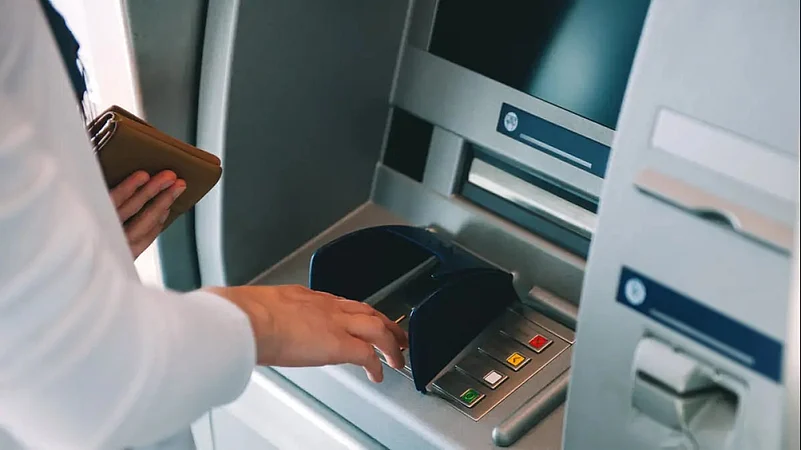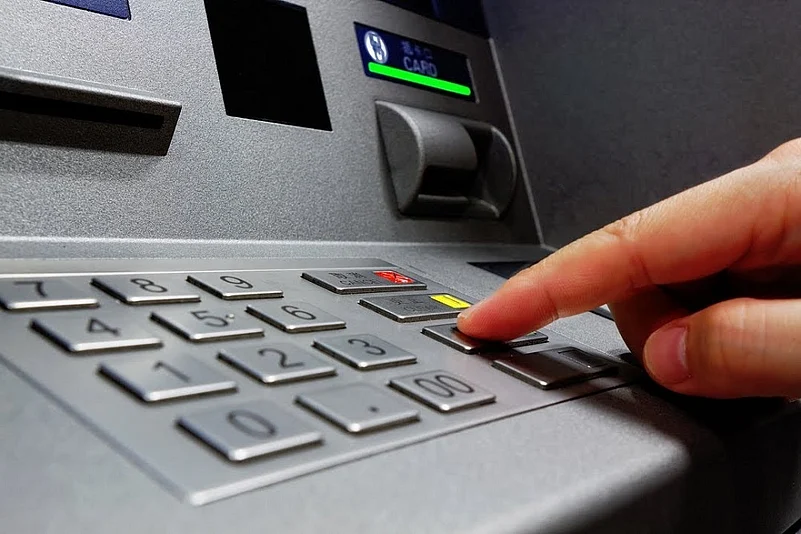A social media user has recently shared his traumatic experience online about his visit to an ATM (automatic teller machine) that deducted money from his bank account but failed to dispense the case he wanted to withdraw.
“I tried to withdraw Rs 10,000 from the ATM, but the money did not come out of the machine. It flagged an error on the screen, but I did not understand it. But strangely money was deducted from my bank account for this transaction. Since it was in the late hours and the bank above the ATM was closed, I could not ask them. However, by the next morning, the money was returned to my account.”
It was traumatic for him not knowing where the money had gone and not being able to contact the bank in the middle of the night and wished there was someone to tell him about the refund process and assure him that the money was safe.
How Do ATMs Work?
“When a cardholder inserts his/her card in the ATM of the same bank, the PIN and the amount are entered. These details are encrypted along with the data read from the card’s EMV chip and securely transmitted to the card issuer’s bank system called ‘ATM Switch’,” says Sony A, GM and CIO of South Indian Bank.
He adds that after the details are sent to the card issuer bank’s system, it decrypts the transmitted message and validates the card details like card number, PIN, card validity, expiry date, card limits, and the status of the account, including the amount available.
After the system successfully validates all these parameters, the ATM gets an instruction to dispense the requested cash to the customer and the cash withdrawal process is completed.
After this process is completed, an SMS is sent to the cardholder’s registered mobile number.
“For other bank cardholders, card networks, such as NFS (RuPay), VISA, and Mastercard, route the transactions between the acquiring bank and the card holder’s bank for validation and account debit. In India, most ATM transactions are routed through NFS,” says Sony.
The entire process takes a few seconds.
Rajeev Desai, COO, India1 Payments Ltd, a white-label ATM provider, said that the ATM executes or declines the requested transaction based on the issuer’s response.

What To Do If You Face This Issue?
Desai said that in most cases the funds deducted from the account get reversed within minutes of the failure. In case, this auto reversal process does not happen, “the failure is identified during the reconciliation process and the reversal is initiated. The customer could also initiate the reversal by reaching out to his bank in case the automatic reversal has failed.”
Sony further adds that most ATM sites display the customer care number which can be used if customers need help. Wherever the bank identifies a transaction failure, reversals are proactively initiated by the bank without the customer complaint, says Sony. Customers can also raise complaints using internet banking/mobile banking channels for resolving their issues.
Desai advised users not to panic in such a situation as the money doesn’t get lost in a failed transaction. The card issuer and card acquirer perform the daily reconciliation of transactions performed by their cardholders and ATMs.
“This is required to validate the funds settled on a daily basis. During the reconciliation, the acquirer identifies the failed transactions and processes credit to the cardholder against the same via an aggregator,” adds Desai.
“Physical counting of cash is not mandatory for the majority of failed transactions and is processed on the basis of transaction level reconciliation between Acquirer processor (Switch), Card Network (RuPay, VISA, others) and Electronic Journal (EJ),” says Desai of India1 Payments.
How Do ATM Transactions Get Settle?
Desai shared an interesting insight regarding how transactions in ATMs get verified and settled and the parties involved.
He said that the key players involved in ATM withdrawal transactions’ authorisation and settlement are the “cardholder and ATM, the acquirer (ATM Operator), the issuing bank (the cardholder’s bank), and the aggregator (NFS, Visa, etc.).

Image Credit: Rajeev Desai, COO, India1 Payments Ltd.
What Happens If The Card Is Stuck?
Although the chances of cards getting stuck in an ATM are low, nonetheless, it has happened.
Sony A of South Indian Bank advises users not to panic and try to pull out the card by force as it will damage both the card and the ATM machine.
He said that every transaction has a timeout limit, and once a transaction is timed out, the ATM automatically unlatches the card and then it can be taken out safely. “So, it is best advised to wait in the ATM room till the transaction is timed out,” added Sony.














